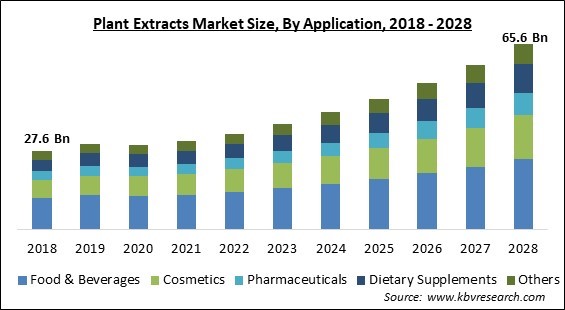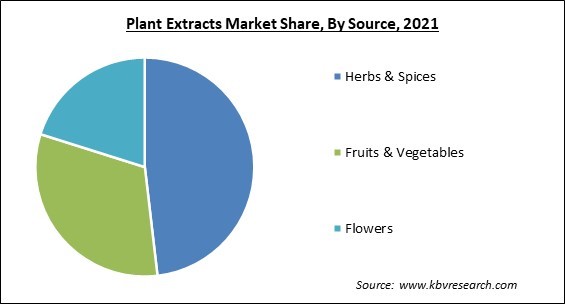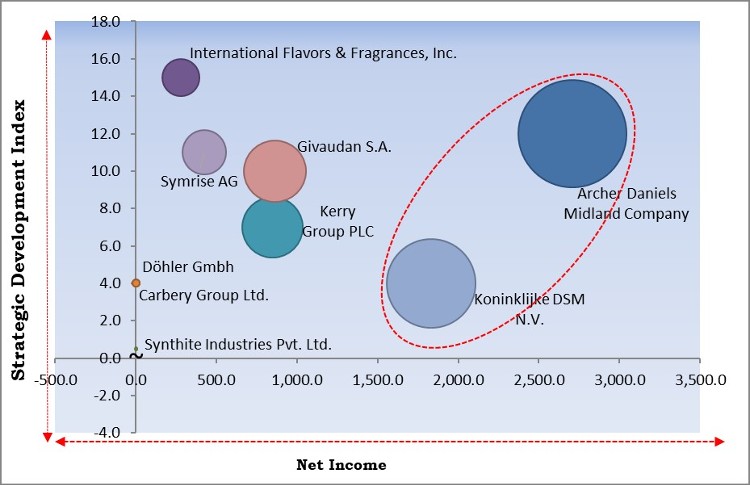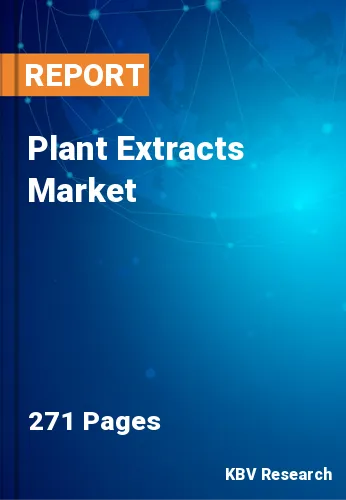The Global Plant Extracts Market size is expected to reach $65.6 Billion by 2028, rising at a market growth of 11.7% CAGR during the forecast period.
Open banking is basically a financial service that enables the electronic sharing of financial data. Additionally, application programming interfaces, also called APIs, are leveraged by open banking services in order to conduct a secure financial data transfer. The interchange of financial data between banks and other service providers is another thing that happens. An open API affords protection to customers' private data, such as the transaction histories and patterns collected by third-party service providers. This enables simple access to publicly available data, such as a bank's product offerings. As a result, the financial data collected about a customer is used to develop sophisticated applications that are intended to enhance the user experience for financial services.

Excipients may also be employed in specific situations to give powdered or granular product qualities, like high fluidity and resilience to moisture absorption. There are also a few items made from liquid or greasy plant extracts. Plant extracts can be used as and in a variety of applications, including natural sweeteners, natural pigments, functional plant extracts, extracts used in traditional medicine, and plant essential oils utilized in food, additives, specialty foods, health foods, everyday cosmetics, and chemicals, formula particles, and APIs.
Plant roots, stems, leaves, flowers, and fruits serve as the primary raw materials for creating organic matter, which is then processed through drying, refining, and separating steps. Natural pigments derived from plant extracts are a type of organic material. Currently, there are more than 40 primary natural pigments available on the market, including curcumin, gardenia yellow pigment, marigold extract, and capsicum red pigment.
The COVID-19 pandemic has slowed down the expansion of numerous international industries, which has resulted in widespread disruption for both buyers and sellers. A number of businesses and production facilities were closed, which has put a stop to the product's production, sale, and marketing. The production of plant extracts was also hauled due to the lockdown caused by the COVID-19 pandemic. However, in the middle period of the pandemic, the demand for plant extracts was expedited due to a number of health benefits of this product. The effectiveness of medicinal plant extracts over coronavirus played a major role in increasing its adoption during the pandemic.
Due to their calming, energizing, antiseptic, antibacterial, decongestant, soothing, antispasmodic, anti-inflammatory, and other beneficial characteristics, essential oils are frequently used in cosmetics, perfumery, cleaning goods, and household fragrances. Essential oils, like lemon and orange, in addition to being utilized as fragrances, also have antibacterial characteristics, drawing interest as potential cosmetic active components. Additionally, essential oils are employed in skincare products that have anti-acne, anti-aging, skin-lightening, and sun-protection properties. This rising demand for such products from the cosmetic industry is significantly driving the growth of the plant extracts market.
Technology's involvement throughout the supply chain aids in the growth of the plant extraction industry. High technology is being used in bioactive extraction. Additionally, the use of Green technologies would lead to major sustainable measures. For instance, the polar-nonpolar-sandwiching (PNS) technique was utilized to extract a variety of bioactive from turmeric root extract, including curcuminoid, protein, fiber, polyphenols, and essential oils. A green technology for extracting bioactive materials is ultrasound-assisted extraction. The development of such technical expertise is stimulating the growth of the plant extracts market.
There is a wide variety of plants that are resent all over the world with a significant number of different benefits. However, due to the destruction of forests and extinction of species, several plant species are no longer present. Furthermore, the supply is limited because these therapeutic herbs are only farmed in a selected few nations. In addition, there is an imbalance in supply and demand because there is a limited amount because all these plants only grow once a year. It affects the price of raw materials as well, and the increased cost of storage drives up the price. The market is constrained because demand exceeds supply.
Based on Product Type, the Plant Extracts Market is segregated into Oleoresins, Essential oils, Flavonoids, Alkaloids, Carotenoids, and Other types. In 2021, the oleoresin segment procured the largest revenue share of the plant extracts market. The increasing growth of the segment is attributed to the health benefits of oleoresin extracts. The anti-inflammatory and anti-cancer effects of oleoresin. Antioxidants, which prevent free radicals, are abundant in it. It also contains a chemical called sulfur, which is used to treat osteoarthritis and rheumatoid arthritis. Heart problems are also treated with it.

On the basis of Application, the Plant Extracts Market is segmented into Food & beverages, Cosmetics, Pharmaceuticals, Dietary Supplements, and Other applications. In 2021, the pharmaceutical segment witnessed a significant revenue share of the plant extracts market. The pharmaceutical industry heavily relies heavily on the phytochemicals found in medicinal plants. Alkaloids, phenolics, glycosides, terpenoids, and flavonoids are just a few of the many plant metabolites that are separated using traditional extraction techniques and specific solvents.
By Form, the Plant Extracts Market is bifurcated into Dry and Liquid. In 2021, the dry segment acquired the biggest revenue share of the plant extracts market. Drying liquid extracts, such as water extracts and tinctures, frequently under vacuum, produces powdered extracts. The most popular applications for powdered extracts are tablets and capsules. Some powdered extracts are produced using solvents besides ethanol and water because the solvent is removed from the finished product.
Based on Source, the Plant Extracts Market is classified into Herbs & spices, Fruits & vegetables, and Flowers. In 2021, the herbs & spices segment procured the largest revenue share of the plant extracts market. The growing health consciousness of consumers has led to an increase in the popularity of plant extracts extracted from herbs and spices worldwide. The market growth for the herbs and spices segment is driven by the popular flavors and flavored drinks, as well as the segment's healthfulness and sustainability.
| Report Attribute | Details |
|---|---|
| Market size value in 2021 | USD 31.1 Billion |
| Market size forecast in 2028 | USD 65.6 Billion |
| Base Year | 2021 |
| Historical Period | 2018 to 2020 |
| Forecast Period | 2022 to 2028 |
| Revenue Growth Rate | CAGR of 11.7% from 2022 to 2028 |
| Number of Pages | 271 |
| Number of Tables | 484 |
| Report coverage | Market Trends, Revenue Estimation and Forecast, Segmentation Analysis, Regional and Country Breakdown, Competitive Landscape, Companies Strategic Developments, Company Profiling |
| Segments covered | Application, Source, Form, Product Type, Region |
| Country scope | US, Canada, Mexico, Germany, UK, France, Russia, Spain, Italy, China, Japan, India, South Korea, Singapore, Malaysia, Brazil, Argentina, UAE, Saudi Arabia, South Africa, Nigeria |
| Growth Drivers |
|
| Restraints |
|
Region-Wise, the Plant Extracts Market is analyzed across North America, Europe, Asia-Pacific, and LAMEA. In 2021, Asia Pacific accounted for the maximum revenue share of the plant extracts market. Due to significant domestic and international demand, the plant extracts market in the region is booming. Vital Herbs, Alchemy Chemicals, Sydler, and Plantnat are just a few of the small and medium-sized plant extract manufacturers in the region that is aware of the manufacturing of plant extracts and aware of the advantages they bring.
Free Valuable Insights: Global Plant Extracts Market size to reach USD 65.6 Billion by 2028

The matrix is designed considering the major strategic developments including Mergers & Acquisitions, product launches, partnership among others and the financial strength of the company in the considered years. Companies such as Kerry Group PLC, Givaudan S.A., Symrise AG are some of the key innovators in Plant Extracts Market.
The market research report covers the analysis of key stake holders of the market. Key companies profiled in the report include International Flavors & Fragrances, Inc., Kerry Group PLC, Archer Daniels Midland Company, Carbery Group Ltd., Koninklijke DSM N.V., Döhler Gmbh, Symrise AG, Givaudan S.A., Synthite Industries Pvt. Ltd., and Kalsec Inc.
By Application
By Source
By Form
By Product Type
By Geography
The global Plant Extracts Market size is expected to reach $65.6 Billion by 2028.
Rising demand from the personal care and cosmetic industry are driving the market in coming years, however, Frequent fluctuations in prices and low availability of raw material restraints the growth of the market.
International Flavors & Fragrances, Inc., Kerry Group PLC, Archer Daniels Midland Company, Carbery Group Ltd., Koninklijke DSM N.V., Döhler Gmbh, Symrise AG, Givaudan S.A., Synthite Industries Pvt. Ltd., and Kalsec Inc.
The expected CAGR of the Plant Extracts Market is 11.7% from 2022 to 2028.
The Food & Beverages market acquired the maximum revenue share in the Global Plant Extracts Market by Application in 2021, thereby, achieving a market value of $24.8 billion by 2028.
The Asia Pacific market dominated the Global Plant Extracts Market by Region in 2021, and would continue to be a dominant market till 2028; thereby, achieving a market value of $25.2 Billion by 2028.
Our team of dedicated experts can provide you with attractive expansion opportunities for your business.

